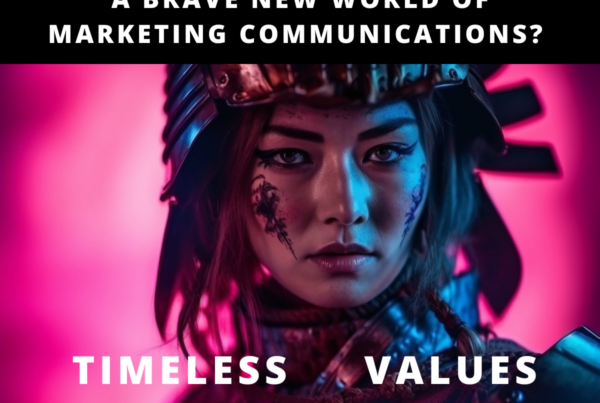Why long-form content plays a key role in evergreen B2B Marketing Communications
Written word vs video?
All hail the King
Perhaps one of the greatest truisms banded around in the field of marketing and communications is the idea that ‘content is King’. But all-too-often, the issue can become clouded by a debate over format rather than form.
By that, we mean the ‘battle’ that rages between camps as to whether communication and marketing should be founded on an approach grounded in written or AV-based mediums. There can be no doubt that the rise of video has been astronomical over the past decade – especially with the advent of YouTube, and latterly, TikTok. You’ll have already undoubtedly read the statistics before, but they still take some getting your head round; YouTube boasts of 2 billion monthly active users, and they watch over 5 billion videos daily – that is about 1 billion hours of video every day which means that 500 hours of video are uploaded to YouTube every minute.
And that’s just YouTube.
But quantity isn’t always quantity – meaning the rise of video consumption doesn’t necessarily equate to an automatic assumption that video is the only or best way to communicate your business and your product. The truth is, whilst it does have significant potential as a communication medium, it also carries a multitude of pitfalls and limitations. The truth remains; sometimes the pen is still mightier than the pixel.
And it’s that which we want to dive into this month.
The challenges of video
It’s resource intensive
Crafting an attention-grabbing video is just as much an art, craft and science as the creation of an engaging written article. And from a resource point of view, it’s easy to think they’re the same in terms of needs these days too; surely anybody with a smartphone in their pocket has the means to produce a video, right? Just as anybody with a laptop can bash out a couple of hundred words.
 But the truth is, with video it’s a lot harder to pass a certain threshold of professionalism and quality. The fundamental skill of a good writer and a videographer are roughly the same, because those elements are founded on their knowledge, creativity and the way they have honed the theory that underpins their craft. It’s these which differentiate them from your ‘average Joe’ with a camera or a keyboard, who thinks he can tackle the task for half the budget (but invariably, can’t). But whilst a good writer can produce a meaningful output with just a laptop and a few hours (excluding research time), a videographer still needs an incredible amount of equipment and time to differentiate their output from the mere amateur.
But the truth is, with video it’s a lot harder to pass a certain threshold of professionalism and quality. The fundamental skill of a good writer and a videographer are roughly the same, because those elements are founded on their knowledge, creativity and the way they have honed the theory that underpins their craft. It’s these which differentiate them from your ‘average Joe’ with a camera or a keyboard, who thinks he can tackle the task for half the budget (but invariably, can’t). But whilst a good writer can produce a meaningful output with just a laptop and a few hours (excluding research time), a videographer still needs an incredible amount of equipment and time to differentiate their output from the mere amateur.
It appeals to a very particular audience
The pervasive narrative these days is that video is the single dominant force online. But for whom? And in what spheres of operation?
Certainly, we’re all watching Netflix, and no doubt the teenagers we know are immersed in TikTok on a near-24/7 basis. But the CEOs making in-depth, considered decisions on strategy and investment for the upcoming year? The business analyst? The engineer? Are they watching videos to inform their decisions?
Almost certainly not. Because video is limited by the conventions of its format; it’s therefore inherently linear in terms of time. Which means it can either be short and catchy, or long and in-depth, with no in-between. And that decision is entirely in the hands of the producer rather than the person watching, because even with the ability to skip forward through content, ultimately the viewer has no choice but to wait for the creator to get to the point that they’re looking for, or which resonates with them. In contrast, the written word puts the power in the hands of the reader; the ability of the reader to both scan and search a written document for relevance allows them to engage on whatever level suits them best; superficially or specifically, with intent or with openness.
This means that for business professionals seeking understanding, written content that goes into depth and is nuanced in its analysis, but can also be accessed at will in the way most needed by the reader is by far the more valuable form of communication. Written communication provides a perfect negotiation between the intention of the author and the needs of reader – with the reader either allowing themselves to be guided by the flow of the writer, or more actively taking control of their reading experience to find what they’re looking for. Thus, a long-form article works on two complimentary levels, where video can only operate on one.
Written long-form content carries SEO benefits
This idea of the reader being able to find what they’re looking for leads us to the issue of SEO.
At Xpresso, we understand the importance of SEO – but we refuse to let it dictate our practices. Lead 1000 people to your site by google but have them instantly disengage because the content is repetitive and meaningless will deliver great channel metrics for an end of year report, but is terrible in terms of results you’re actually looking for: sales and the development of a lasting, meaningful customer relationship. It’s here that properly written content – which is concerned far more with meaning than metrics – makes the real difference.
 Moreover, a well-run marketing strategy will operate in such a way that SEO and search engine rankings become an integrated element of content strategies which length and quality actually feed google advanced algorithms. Key phrases rather than key words need to be integrated in your marketing communications because this content approach will allow your brand and name to permeate audiences at multiple touchpoints on a deeper and more subconscious level, in a way that can’t necessarily be tracked according to a single ‘Marketing funnel’. By the time a customer is ready to make a purchase, they won’t be searching from the product type, they’ll be reaching out to your business directly.
Moreover, a well-run marketing strategy will operate in such a way that SEO and search engine rankings become an integrated element of content strategies which length and quality actually feed google advanced algorithms. Key phrases rather than key words need to be integrated in your marketing communications because this content approach will allow your brand and name to permeate audiences at multiple touchpoints on a deeper and more subconscious level, in a way that can’t necessarily be tracked according to a single ‘Marketing funnel’. By the time a customer is ready to make a purchase, they won’t be searching from the product type, they’ll be reaching out to your business directly.
The importance of discovery – especially through search engines – remains understandably important to clients, and long-form written content provides multiple advantages of video in this regard too.
We were talking about the idea of how written content has the ability to address specific questions in a much more direct way – and this ties in particularly with SEO. It’s recognised that people using search engines (OK, let’s not beat around the bush… Google) have increasingly started to ask very direct, ‘human’ questions in their searches. As such, content which directly provides answers has the potential to make it into the new ‘google answer’ box (a snippet analysis of up to 50 words) – which features right at the top of any search and carries obvious benefits as a result. You’ll never find video content there.
But written content carries many more SEO benefits than this – even if it wasn’t written according to the horrendous and frequent unreadable SEO conventions that ‘marketing by numbers’ experts still seem to get away with peddling. (never forget, it’s the horrors of SEO that have led us to the unpalatable trend of every online recipe giving a seven-generation genealogy backstory before they tell you how to make apple crumble).
Where SEO is really optimised through written content is through the ability to link to external content by citing sources and promoting further reading – a key factor that remains constant even in the ever-changing world of search algorithms. Well written content also has the ability to incorporate (a crucially different idea to that of loading) keywords in a naturalistic, meaningful way – though keywords are increasingly less important to search engine rankings than people tend to think these days.
Video needs a special time and place
 Video takes – paradoxically – both more and less attention to engage with. We can have a video playing in the background as we do something else, but to be truly engaged with it, it requires both our ability to devote our gaze and our ears. Conversely, the ability to discreetly read as the world rages around us – to engage and disengage our attention as necessary – is much more flexible than it is with video. On the train, in the office, out for dinner – reading just works better.
Video takes – paradoxically – both more and less attention to engage with. We can have a video playing in the background as we do something else, but to be truly engaged with it, it requires both our ability to devote our gaze and our ears. Conversely, the ability to discreetly read as the world rages around us – to engage and disengage our attention as necessary – is much more flexible than it is with video. On the train, in the office, out for dinner – reading just works better.
It comes back to the idea of reader/viewer agency; with the written word, the power of engagement is in the hands of the reader, and that empowerment is precisely what is likely to keep them not just engaged, but loyal. Knowing that your content is a reliable and legitimate source of information which they can access on their own terms is crucial to fostering the relationship between you and potential customers – and it’s this which you want to build and capitalise upon.
But the modern brain is different…
At this point there’s a reasonable chance – no matter how convinced you are of the power of the written word – that you’re formulating arguments about the way that the internet and social media have changed our brains to favour instant gratification and short-form content. And whilst we can’t deny the human inclination for novelty (which is hardly something new, har har), we’d argue that doesn’t give people enough credit.
In the right setting, for the right reasons, and with the right content, most of us still retain a remarkable capacity to remain engaged and focused (after all, you’re still reading, aren’t you?). Which means that even if you put video to one side, there’s a reason why long-form content (blogs, articles of more than, say, 1000 words) actually carry more value for your business.
We could write yet more on the subject, but the truth is, there is an optimum limit, and we’re close to hitting it. But in pursuit of the point we were making before, check out this article (“our study showed that of these top performing pieces, articles with 1000-3000 words had an advantage in producing higher evergreen scores, social engagements, and backlinks. Fewer people in the B2B space are writing medium and long content, but those that do are at an advantage for content performance”) to discover some more concrete, quantitative statistics to support the importance of long written content as part of your communications strategy.
 As in so much of life, it’s rarely a case of either/or
As in so much of life, it’s rarely a case of either/or
The truth is, of course, that it’s incredibly misguided to think of the debate as dichotomous; a ‘one or the other’ approach that sees each camp attach itself under the banner of video or long-form written content in an effort to determine just which form of content is King.
Because the truth is that marketing isn’t a monarchy, it’s a democracy (but hopefully, a really agile, adaptive and responsive one). It needs to be multifaceted in relation to the elements that feed into it (i.e. explorations that go beyond just the practicality of your product, and instead incorporate ethos, brand, customer relationships and other ‘soft’ points of differentiation). And it also needs to be multifaceted in the way it reaches different audiences, or reaches the same audience in different ways, at different times, and with different tones.
Resultantly, there absolutely is a place – perhaps even a necessity – for written and visual communication to sit side-by-side in an effective marketing and communications strategy. But it’s important to stop thinking of video as the ‘evolution’ of the internet; it’s a technological evolution, certainly, but on a conceptual level, the written word has carried a special kind of force and power for more than 5000 years, so it’s perhaps a little presumptuous to assume it’s been usurped by the invention of TikTok.
So if you’re looking for experts on the written word (who also have a hefty appreciation and understanding of the role of video too), why not talk to us at Xpresso.





